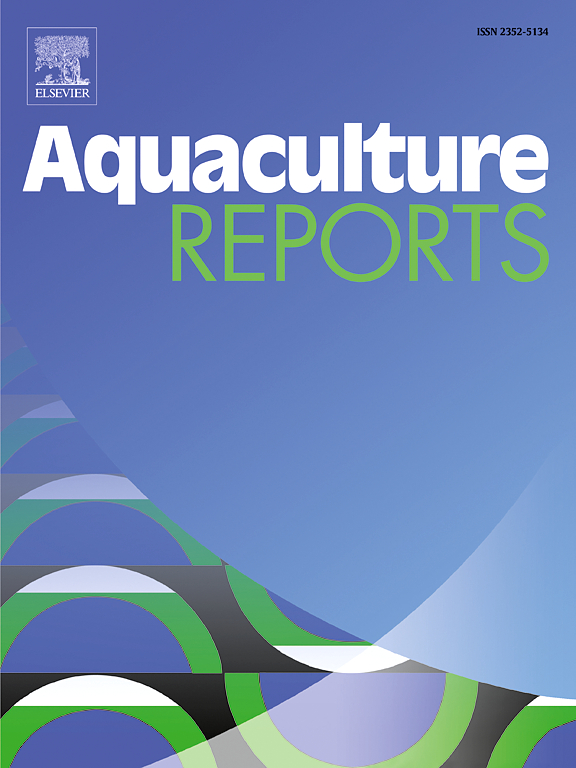Peel of pumpkin (Cucurbita pepo) diets boost growth, digestive-absorptive functions, immune-antioxidant indices, and regulate immunomodulatory genes and mTOR/MAPK-P38/apoptosis signaling pathway in Oreochromis niloticus
IF 3.2
2区 农林科学
Q1 FISHERIES
引用次数: 0
Abstract
Much attention has been focused on the potential application of industrial by-products as feed supplements in fish diets. The current study examines the effects of feeding pumpkin (Cucurbita pepo) peel powder (CPP) on growth, digestive processes, immune-antioxidant parameters, and gene expression that regulates these processes in Nile tilapia (Oreochromis niloticus). Additionally, fish resistance to Aeromonas veronii was assessed. Fish (n = 200; 34.93 ± 0.11 g) were split equally into four groups and kept for 60 days. Fish were given diets supplemented with different CPP levels: 0 (CPP0 was the control diet), 5 (CPP5), 10 (CPP10), and 15 (CPP15) g CPP/kg diet. The findings showed that CPP meals significantly increased (P˂0.05) growth, intestinal morphometrics, and digestive enzyme activity. The optimum dietary level of CPP was 12 g/kg diet according to the broken line regression analysis based on the data of weight gain and feed conversion ratio. CPP diets up-regulated (P˂0.05) the intestinal and muscular gene expression (trypsin, solute carrier family 6, member 18, fatty acid-binding proteins-2, cluster of differentiation 36, insulin growth factor-1, carnitine palmitoyl-transferase-1alpha, pyruvate kinase, and glucokinase). CPP diets improved the immune-antioxidant indices (P˂0.001) (lysozyme, complement 3, myeloperoxidase, superoxide dismutase, reduced glutathione content, and total antioxidant capacity). Moreover, CPP diets increased (P˂0.05) the splenic expression of heme oxygenase-1, interleukins (IL-6 and IL8), tumor necrosis factor-alpha, and nuclear factor erythroid-related factor 2. CPP diets caused down-regulation (P˂0.05) of the splenic expression of the tumor suppressor gene (P53), mitogen-activated protein kinase (P38), caspase-9, and mechanistic target of rapamycin. During the A. veronii challenge, the fish survival percentage increased with CPP diets. Noteworthy, CPP diets could improve Nile tilapia immunity, growth, and disease resistance. Moreover, the best dietary level of CPP was 12 g/kg diet for sustainable Nile tilapia aquaculture.
求助全文
约1分钟内获得全文
求助全文
来源期刊

Aquaculture Reports
Agricultural and Biological Sciences-Animal Science and Zoology
CiteScore
5.90
自引率
8.10%
发文量
469
审稿时长
77 days
期刊介绍:
Aquaculture Reports will publish original research papers and reviews documenting outstanding science with a regional context and focus, answering the need for high quality information on novel species, systems and regions in emerging areas of aquaculture research and development, such as integrated multi-trophic aquaculture, urban aquaculture, ornamental, unfed aquaculture, offshore aquaculture and others. Papers having industry research as priority and encompassing product development research or current industry practice are encouraged.
 求助内容:
求助内容: 应助结果提醒方式:
应助结果提醒方式:


